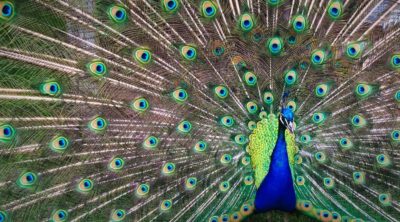
The fennec fox, which is native to some parts of the Sahara Desert and the Arabian peninsula, is popular as an exotic pet. Here is a brief overview about this animal as a pet.
If you want a fox as your pet, then the fennec fox is the best option. But, don’t expect a wild animal with cunning looks. This fox (Vulpes zerda) is the smallest of all foxes, and the smallest species of the Canidae family. The fennec fox is known for its cute looks. You may need a license to keep this fox as a pet.
The fennec fox belongs to the genus Vulpes and the family Canidae, that consists of wolves, foxes, jackals, coyotes, and the domestic dog. Fennec foxes are nocturnal animals, which are very small, when compared to other fox species. They are usually found in some regions of the Sahara Desert and the Arabian peninsula. Their unique physical features are actually adaptations that help them to live in desert conditions.
As mentioned above, the fennec fox is often raised as an exotic pet. This animal has some resemblance to the Chihuahua dog breed that is closely related to wolves.
- Fennec foxes are social animals, that can tolerate strangers and other pets.
- Being highly energetic, fennec foxes need outlets for their energy. So, provide them with toys and other materials to play.
- Even though they are wild in origin, these foxes can be tamed and socialized as a good and well-mannered pet.
- However, owners of these animals must be highly cautious while taking them out for walks; as they are very active, and have a tendency to escape.
- This is applicable for kennels too, which have to be protected from all sides, because these animals are agile and are smart climbers. They can even dig tunnels and escape.
- Any good quality cat or dog food will do for a fennec fox, but wild canid diets are considered the best. You may also feed them with pinkie mice, mealworms, fresh vegetables and fruits, eggs, and crickets. You must find a vet, who is aware of proper fennec fox care.
- Being nocturnal, fennec foxes can be active during nighttime, till they get adjusted. They can get noisy at night, and so, it will be advisable to keep their enclosure away from the bedrooms.
- You can adopt a pet from any reputable fennec fox breeder. However, if you have any plan of keeping a fennec fox as a pet, inquire about the state law, because raising these animals as pets, is banned in some regions. In some places, a license is mandatory to raise a fennec fox as a pet.
Physical Features
Fennec foxes are usually small, with a body weight that ranges between 0.7 to 1.6 kilograms. Their body length varies between 20 to 40 centimeters; and most of the adults are around 20 centimeters tall. It has been observed that the tail of this animal has a length that is almost equal to three-fourth of its body length. The distinctive feature of this animal – the long ears, can grow up to 15 centimeters in length.
The fennec fox has a dense coat, which is usually creamy golden with a black tip; and this coat helps the animal to ward off heat during daytime, but keeps it warm during the night chills. This animal has numerous blood vessels located close to the skin in its large ears. This feature helps them to dissipate heat. The ears are very sensitive, and enable them to hear minute sounds produced by underground prey. Even the soles of their feet are covered with dense fur, that is meant for protection from the hot desert sand. Unlike other foxes, fennec foxes do not have strong body odor.
Behavior
Unlike most of the other fox species, fennec foxes live in groups. They dig dens in the sand, and each den is interlinked with the dens of other fennec fox families. These foxes are not solitary, but are found in groups, especially families. As far as their diet is concerned, fennec foxes are nocturnal, omnivorous animals, that feed on insects, rodents, small birds, eggs, and reptiles. Some of them are found to consume plants and fruits too. They can jump to a height of up to 60 centimeters, and this helps them in catching prey or escaping predators.
They can survive with very little water, and their main source of water is food. This does not mean that these animals do not drink water. Their kidneys are adapted to restricted water consumption. These animals reach sexual maturity at around 11 to 12 months of age; and the mating season is from January to February, with the young being born between March to July. Breeding happens once in every year.









